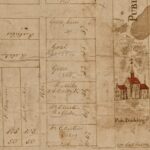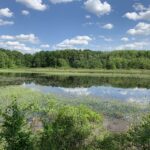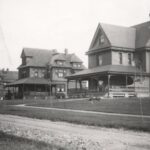Hetzel Union Building
The Hetzel Union Building, better known as the HUB, is the student union on Penn State’s University Park campus. It is named for Ralph Dorn Hetzel, the president of Penn State during the initial planning of the building.

The Hetzel Union Building, better known as the HUB, is the student union on Penn State’s University Park campus. It is named for Ralph Dorn Hetzel, the president of Penn State during the initial planning of the building.

Jail Hill is the area near the Centre County Courthouse in Bellefonte where at least three 19th century jails were constructed starting in 1800, the same year the county was established. The first “prison houses” or “common goals,” as they were sometimes known, were built on East High Street.

Penn’s Creek is the longest limestone stream in Pennsylvania. The scenic stream, which has its headwater near Penn’s Cave in Centre County, is known for outstanding fly fishing.

Millbrook Marsh Nature Center is a 62-acre a farmstead and wetland in College Township established to educate visitors about the natural world.

The Scotia Barrens is a distinct ecozone of about 6,200 acres west of State College protected within State Game Lands #176. The area is a microclimate zone, with temperatures noticeably lower than the adjoining areas, that features plentiful plant and animal life.

College Heights is a residential neighborhood in State College that was originally developed to provide housing for Penn State faculty, staff, and students. Much of the neighborhood is included in a National Register Historic District.

Shortly before the dawn of the automobile age, two Centre County railroads established summer recreational parks that attracted thousands of visitors annually. Hecla Park and Hunters Park were built to create modest but dependable sources of income that helped railroads weather the ups and downs of the freight business.

In the late 19th and early 20th centuries, Penn State built on-campus cottages to house faculty members. In the years since, the cottages have served many purposes and three still fulfill important roles on the campus.

Centre County is comprised of twenty-five townships and ten boroughs that provide local government for residents. The number of boroughs and townships has grown and changed since the county’s founding in 1801.

Boalsburg, originally known as Springfield, is a historic village in Harris Township, near the base of Tussey Mountain. After the Revolutionary War, settlers moved to the valley and among them was David Boal, who built a stone cabin in 1803, which still stands as part today’s Boal Mansion.